Popular categories
Looking for a yarn?

100% Cotton
from 1.10 £ /50g
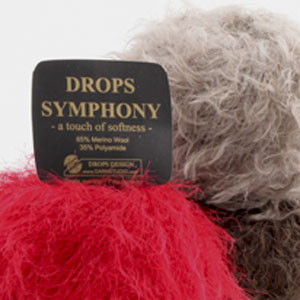
Order DROPS Needles & Hooks
Clicking the ORDER button will redirect you to Wool Warehouse Direct Ltd website
DROPS 95-12
DROPS Long jacket with pattern in Paris and hair band in Symphony
Jacket
Size: XS - S – M – L – XL - XXL
Materials: DROPS Paris from Garnstudio
650-700-800-850-950-1050 g colour no. 44, brown
Drops pointed needle size 5 and 5.5mm
-------------------------------------------------------
Alternative Yarn – See how to change yarns here
Yarn Groups A to F – Use the same pattern and change the yarn here
Yarn usage using an alternative yarn – Use our yarn converter here
-------------------------------------------------------

100% Cotton
from 1.10 £ /50g

Order DROPS Needles & Hooks
Clicking the ORDER button will redirect you to Wool Warehouse Direct Ltd website
- English (UK/cm)
- Česky - not translated
- Dansk
- Deutsch
- Eesti keel - not translated
- English (US/in)
- Español
- Français
- Íslenska - not translated
- Italiano
- Magyar
- Nederlands
- Norsk
- Polski
- Português
- Suomi
- Svenska
- English (UK/cm), Bulgaria
- English (UK/cm), Croatia
- English (UK/cm), Greece
- English (UK/cm), Latvia
- English (UK/cm), Lithuania
- English (UK/cm), Romania
- English (UK/cm), Slovenia
- Česky, Slovakia - not translated
Pattern instructions
Knitting tension: 16 sts x 20 rows on needle size 5.5 mm in stocking stitch = 10 x 10 cm
Garter stitch: Knit all rows
Pattern: See diagram M.1 and M.2. The diagram shows the pattern from the right side.
Knit pattern as follows: *M.1 in 4-4-4.5-4.5-4.5-5 cm, M.2, M.1 in 4-4-4.5-4.5-4.5-5 cm, M.2, M.1 in 9-10-10-11-12-12 cm, M.2*, repeat from *-* a total of 2 times. Now knit M.1 in 4-4-4.5-4.5-4.5-5 cm, M.2, M.1 in 4-4-4.5-4.5-4.5-5 cm and finish with M.2.
Front band: knit in garter sts until finished measurements. Knit the 3 outermost sts in double thread throughout.
Increasing tips (applies to collar): inc 1 st within the outermost st towards mid front by making a yo. On next row knit yo into back of st to avoid making a hole.
Decreasing tips (applies to neckline): Decrease within all garter sts from the right side. Dec as follows before garter sts: K2 tog. Dec as follows after garter sts: slip 1 st as if to knit, K1, psso.
Measuring tips: All measurements should be made while the garment is hanging.
Back piece: Cast on 67-75-83-91-99-107 sts (inclusive of 1edge st each side) using 2 needles size 5.5 with Paris (to make sure the edge becomes elastic). Remove 1 needle and knit 4 rows garter st (1st row = right side). Knit next row as follows from the right side: 1 edge st, M.1A (= 5 sts), M.1B over the next 56-64-72-80-88-96 sts, M.1C (= 4 sts), 1 edge st. Continue in pattern – see explanation above.
When piece measures 51-52-53-54-55-57 cm – see measuring tips - dec for armhole each side on every other row as follows: 3 sts 1 time, 2 sts 0-1-2-4-5-6 times and 1 st 2-3-4-4-5-6 times = 57-59-61-61-63-65 sts. Note! Knit sts not fitting into pattern after decreases in stocking sts. Make sure to keep to the correct number of sts by making as many yo’s as sts knitted tog. When there are 2 rows of garter sts left in pattern (piece measures approx 69-71-73-75-77-80 cm) cast off the middle 19-21-21-21-23-23 sts for neck = 19-19-20-20-20-21 sts left on each shoulder. Cast off after the last row in pattern, piece measures approx 70-72-74-76-78-81 cm.
Left Front: Cast on 46-46-54-54-62-62 sts (inclusive of 1seam st at side and 12 edge sts towards mid front) using 2 needles size 5.5 with Paris. Remove 1 needle and knit 4 rows garter st (1st row = right side), but knit the 3 outermost sts towards mid front with double thread (use a separate ball and let the thread follow the piece as you progress). Now knit 2 rows stocking sts. NB! Remember 12 sts towards mid front in garter sts throughout. Knit next row as follows from the right side: 1 seam st, M.1A (= 5 sts), M1.B over 24-24-32-32-40-40 sts, M.1C (= 4 sts), and 12 front band sts.
Read all of the following section before continuing:
Collar: When piece measures 50-51-52-53-54-55 cm inc 1 st towards mid front on every 4th row – see Increasing tips – a total of 8 times. Knit inc sts in garter sts with double thread = 11 sts in double thread after all inc have been made. After the last inc (piece measures approx 64-65-66-67-68-69 cm), cast off the 10 outermost sts towards mid front on next row, on the following row cast on 10 new sts over the cast off sts (lapel). Continue in garter sts as before.
Neckline: At the same time when piece measures 52-53-54-55-56-57 cm dec 1 st for neck on every other row – see Decreasing tips – a total of 5-2-5-2-6-2 times and then on every 4th row a total of 5-5-6-5-6-6 times. Knit sts not fitting into pattern in stocking sts.
Armhole: At the same time when piece measures 51-52-53-54-55-56 cm dec for armhole as described for back piece. After all increases and decreases have been made there are 39-39-40-40-40-41 sts on needle (i.e. 19-19-20-20-20-21 sts on shoulder and 20 sts for collar). Continue in pattern and collar sts as before. After the last row in pattern cast of the outermost 19-19-20-20-20-21 sts for shoulder = 20 sts left.
Collar: Continue over the 20 collar sts with the 11 outermost sts in double thread. Knit as follows: *4 rows garter sts over all sts, 2 rows garter sts over only the outermost 11 sts*, repeat from *-* until collar measures 6-6.5-6.5-6.5-7-7 cm (it will measure approx 12-13-13-13-14-14 cm on the outer side). Put sts on a thread.
Right front piece: As left front piece, but mirrored.
Sleeve: Cast on 44-44-46-46-48-48 sts (inclusive of 1 seam st each side) on needle size 5. Knit garter sts and dec 4 sts evenly on the 3rd row = 40-40-42-42-44-44 sts. When piece measures 10 cm change to needle size 5.5 and continue in M.3 until finished measurements. At the same time after the last row in garter sts, inc 1 st each side on every 5-3.5-3-2.5-2.5-2 cm a total of 8-10-11-13-13-15 times = 56-60-64-68-70-74 sts. When piece measures 47-45-44-43-42-41 cm cast off for sleeve cap each side on every other row as follows: 3 sts 1 time, 2 sts 3 times, 1 st 0-1-2-4-6-7 times, and then 2 sts each side until piece measures 53-53-53-54-55-55 cm, now dec 3 sts each side and cast off remaining sts on next row, piece measures approx 54-54-54-55-56-56 cm.
Assembly: Sew shoulder seams. Sew sts from threads on collar together and sew collar to back piece with the seam on the right side. Set in sleeves and sew sleeve and side seams within 1 seam st.
Close the jacket with a broche.
HAIRBAND
Length: 105 cm + tassels
Materials: DROPS Symphony from Garnstudio
50 g colour no. 03, brown
DROPS crochet hook size 5 mm
12 wooden beads
Crochet ch’s whilst inserting beads in the chain when piece measures 5-12-16-21-31-39-45-57-76-86-93 and 104 cm as follows: Crochet 1 ch, pull st 1-1.5 cm long, pull st-loop through a bead (use a pin to push it through), put crochet hook through st again, make a yo, pull yo through st, continue with ch’s. After the last bead, make a ch and cut the thread. Now crochet 4 bubbles as follows:
Crochet 5 ch (= 1 ch + 1 dtr), 6 dtr in the first ch just crochet, turn the piece. 4 ch (= 1 dtr), now crochet 1 dtr in each of the 6 dtr from previous row, but crochet the dtr’s together as follows: crochet 1 dtr in first dtr but wait with the last yo and pull-through (= 2 sts on needle), crochet 1 dtr in next dtr but wait with the last yo and pull-through (= 3 sts on needle), continue like this until all 6 dtr have been crochet (= 7 sts on needle). Pull the last yo on the last dtr through all sts on needle. Cut the thread. Sew on a bubble each end of the hair band and place the other 2 approx 25 cm in from each end (each bubble will have a opening on one side, sew this side to the chain).
Tassels: Cut 7 threads Symphony, each 20 cm long, fold them double, and attach to one end of hair band. Repeat other end.
Diagram

|
= knit from right side, purl from wrong side |

|
= purl from right side, knit from wrong side |

|
= yarn over needle |

|
= K2 tog |

|
= slip 1 st as if to knit, K1, psso |

|
= slip 1 st as if to knit, K2 tog, psso |

What can you do with our patterns? You can share DROPS patterns online, using the pattern original picture, materials, name and number. But you are NOT ALLOWED to reproduce the complete pattern digitally in any way. Yarn stores are welcome to use the DROPS pattern database to promote the sale of our assortment. You can print out our patterns, make as many copies as you’d like. The only thing we ask is that you don't make any changes / additions to the original printed document. And that the patterns according to the DROPS philosophy are given out to the consumers for free. Editorials that wish to publish our patterns in printed books or magazines can contact us for more information. The sale of garments based on DROPS patterns is permitted as long as they are sold as single items or per order. Further commercial use of the patterns is not permitted. It has to be clearly stated that the garment is made based on a design from DROPS DESIGN. The use of clothing labels of which DROPS DESIGN forms part is conditioned by the inclusion of the following text: “A DROPS DESIGN made by …..”. The use of DROPS photos for marketing purposes/sales is only permitted in connection with the use/sale of DROPS products. The photos may not be cut or edited and the logo should be clearly visible.
We reserve the right to withdraw the permission for use of our patterns at any time, notwithstanding the reason.
Each of our patterns has specific tutorial videos to help you.
These step-by-step tutorials might also help you:
Why is the knitting/crochet tension so important?
Knitting tension is what determines the final measurements of your work, and is usually measured per 10 x 10 cm. It is provided like so: number of stitches in width x number of rows in height - eg: 19 stitches x 26 rows = 10 x 10 cm.
The knitting tension is very individual; some people knit/crochet loosely while others work tightly. You adjust the knitting tension with the needle size, which is why the suggested needle size is only meant as a guide! You need to adjust this (up or down) to ensure that YOUR knitting tension matches the knitting tension provided in the pattern. If you work with a different knitting tension than provided you will have a different yarn consumption, and your work will have different measurements than what the pattern suggests.
The knitting tension also determines which yarns can replace each other. As long as you achieve the same knitting tension you can replace one yarn with another.
See DROPS lesson: How to measure your tension/gauge
See DROPS video: How to make a gauge tension swatch
How do I know how many balls of yarn I need?
The required amount of yarn is provided in grams, eg: 450 g. To calculate how many balls you’ll need you first need to know how many grams are in 1 ball (25g, 50g or 100g). This information is available if you click on the individual yarn quality on our pages. Divide the amount required with the amount of each ball. For example, if each ball is 50g (the most common amount), the calculation will be as follows: 450 / 50 = 9 balls.
Can I use a different yarn than what the pattern suggests?
The important thing when changing from one yarn to another is that the knitting/crochet tension remains the same. This is so that the measurements of the finished piece will be the same as on the sketch provided. It is easier to achieve the same knitting tension using yarns from the same yarn group. It is also possible to work with multiple strands of a thinner yarn to achieve the knitting tension of a thicker one. Please try our yarn converter. We recommend you to always work a test swatch.
Please NOTE: when changing yarn the garment might have a different look and feel to the garment in the photo, due to individual properties and qualities of each yarn.
See DROPS lesson: Can I use a different yarn than the one mentioned in the pattern?
What are the yarn groups?
All our yarns are categorised into yarn groups (from A to F) according to thickness and knitting tension – group A contains the thinnest yarns and group F the thickest. This makes it easier for you to find alternative yarns to our patterns, should you wish to switch yarn. All yarns within the same group have a similar knitting tension and can easily replace each other. However, different yarn qualities have different structures and properties which will give the finished work a unique look and feel.
How do I use the yarn calculator?
At the top of all our patterns you’ll find a link to our yarn calculator, which is a helpful tool should you wish to use a different yarn than suggested. By filling in the yarn quality you wish to replace, the amount (in your size) and number of strands, the calculator will present good alternative yarns with the same knitting tension. Additionally it will tell you how much you’ll require in the new qualities and whether you’ll need to work with multiple strands. Most skeins are 50g (some are 25g or 100g).
If the pattern is worked with multiple colours, every colour will have to be calculated separately. Similarly, if the pattern is worked with several strands of different yarns (for example 1 strand Alpaca and 1 strand Kid-Silk) you will have to find alternatives for each, individually.
Why do you show discontinued yarns in the patterns?
Since different yarns have different qualities and textures we have chosen to keep the original yarn in our patterns. However, you can easily find options among our available qualities by using our yarn calculator, or simply pick a yarn from the same yarn group.
It is possible that some retailers still have discontinued yarns in stock, or that someone has a few skeins at home that they would like to find patterns for.
The yarn calculator will provide both alternative yarn as well as required amount in the new quality.
What size should I knit?
If you think it's hard to decide what size to make, it can be a good idea to measure a garment you own already and like the size of. Then you can pick the size by comparing those measures with the ones available in the pattern's size chart.
You'll find the size chart at the bottom of the pattern.
See DROPS lesson: How to read size chart
Why do I get the wrong knitting tension with the suggested needle size?
The needle size provided in the pattern serves only as a guide, the important thing is to follow the knitting tension. And since knitting tension is very individual, you will have to adjust the needle size to ensure that YOUR tension is the same as in the pattern – maybe you’ll have to adjust 1, or even 2 needle sizes, up or down to achieve the correct tension. For this, we recommend that you work test swatches.
Should you work with a different knitting tension than the one provided, the measurements of the finished garment might deviate from the measurement sketch.
See DROPS lesson: How to measure your tension/gauge
See DROPS video: How to make a tension/gauge swatch
Why is the pattern worked top-down?
Working a garment top-down provides more flexibility and room for personal adjustment. For example it is easier to try the garment on while working, as well as making adjustments to length of yoke and shoulder caps.
The instructions are carefully explaining every step, in the correct order. Diagrams are adjusted to the knitting direction and are worked as usual.
How do I work according to a knitting diagram?
The diagram depicts all rows/rounds, and every stitch seen from the right side. It is read from bottom to top, from right to left. 1 square = 1 stitch.
When working back and forth, every other row is worked from the right side and every other row is worked from the wrong side. When working from the wrong side, the diagram will have to be worked reversed: from left to right, knit stitches are purled, purl stitches are knit etc.
When working in the round every round is worked from the right side and the diagram are worked from right to left on all rounds.
See DROPS lesson: How to read knitting diagrams
How do I work according to a crochet diagram?
The diagram depicts all rows/rounds, and every stitch seen from the right side. It is worked from bottom to top, from right to left.
When working back and forth every other row is worked from the right side: from right to left and every other row is worked from the wrong side: from left to right.
When working in the round, every row in the diagram are worked from the right side, from right to left.
When working a circular diagram you start in the middle and work your way outwards, counter clockwise, row by row.
The rows usually start with a given number of chain stitches (equivalent to the height of the following stitch), this will either be depicted in the diagram or explained in the pattern.
See DROPS lesson: How to read crochet diagrams
How do I work several diagrams simultaneously on the same row/round?
Instructions for working several diagrams after each other on the same row/round, will often be written like so: “work A.1, A.2, A.3 a total of 0-0-2-3-4 times". This means you work A.1 once, then A.2 is worked once, and A.3 is repeated (in width) the number of times provided for your size – in this case like so: S = 0 times, M = 0 times, L=2 times, XL= 3 times and XXL = 4 times.
The diagrams are worked as usual: begin with the first row in A.1, then work the first row in A.2 etc.
See DROPS lesson: How to read knitting diagrams
See DROPS lesson: How to read crochet diagrams
Why are the sleeves shorter in larger sizes?
The total width of the garment (from wrist-to-wrist) will be larger in the larger sizes, despite the actual sleeves being shorter. The larger sizes have longer sleeve caps and wider shoulders, so there will be a good fit in all sizes.
Where on the garment is the length measured?
The measurement sketch/schematic drawing provides information regarding the full length of the garment. If it’s a jumper or a jacket the length is measured from the highest point on the shoulder closest to the neckline, and straight down to the bottom of the garment. It is NOT measured from the tip of shoulder. Similarly, the length of yoke is measured from the highest point on the shoulder and down to where yoke is split into body and sleeves.
On a jacket measures are never taken along bands, unless specifically stated. Always measure inside band stitches when measuring the length.
See DROPS lesson: How to read a schematic drawing
What is a repeat?
Diagrams are often repeated on the round or in height. 1 repeat is the diagram the way it appears in the pattern. If it says to work 5 repeats of A.1 in the round, then you work A.1 a total of 5 times after/next to each other in the round. If it says to work 2 repeats of A.1 vertically/in height you work the entire diagram once, then begin again at the start and work the entire diagram one more time.
Why does the piece start with more chain stitches than it’s worked with?
Chain stitches are slightly narrower than other stitches and to avoid working the cast-on edge too tight, we simply chain more stitches to begin with. The stitch count will be adjusted on the following row to fit the pattern and measurement sketch.
Why increase before the rib edge when the piece is worked top-down?
The rib edge is more elastic and will contract slightly compared to, for example, stocking stitch. By increasing before the rib edge, you avoid a visible difference in width between the rib edge and the rest of the body.
Why increase in the cast-off edge?
It’s very easy to cast off too tightly, and by making yarn overs while casting off (and simultaneously casting these off) you avoid a too tight cast off edge.
See DROPS video: How to bind off with yarn overs (yo)
How do I increase/decrease on every 3rd and 4th row/round alternately?
To achieve an even increase (or decrease) you can increase on, for example: every 3rd and 4th row alternately, like so: work 2 rows and increase on the 3rd row, work 3 rows and increase on the 4th. Repeat this until the increase is complete.
See DROPS lesson: Increase or decrease 1 st on every 3rd and 4th row alternately
How can I work a jacket in the round instead of back and forth?
Should you prefer to work in the round instead of back and forth, you may of course adjust the pattern. You’ll need to add steeks mid-front (usually 5 stitches), and follow the instructions. When you would normally turn and work from the wrong side, simply work across the steek and continue in the round. At the end you’ll cut the piece open, pick up stitches to work bands, and cover the cut edges.
See DROPS video: How to knit steeks and cut open
Can I work a jumper back and forth instead of in the round?
Should you prefer to work back and forth instead of in the round, you may of course adjust the pattern so you work the pieces separately and then assemble them at the end. Divide the stitches for the body in 2, add 1 edge stitch in each side (for sewing) and work the front and back pieces separately.
See DROPS lesson: Can I adapt a pattern for circular needles into straight needles?
Why is the pattern slightly different than what I see in the photo?
Pattern repeats can vary slightly in the different sizes, in order to get the correct proportions. If you’re not working the exact same size as the garment in the photo, yours might deviate slightly. This has been carefully developed and adjusted so that the complete impression of the garment is the same in all sizes.
Make sure to follow instructions and diagrams for your size!
How do I make a women’s size garment into a men’s size one?
If you have found a pattern you like which is available in women’s size it’s not very difficult to convert it to men’s size. The biggest difference will be the length of sleeves and body. Start working on the women size that you think would fit across the chest. The additional length will be worked right before you cast off for the armhole/sleeve cap. If the pattern is worked top-down you can add the length right after the armhole or before the first decrease on sleeve.
Regarding additional yarn amount, this will depend on how much length you add, but it is better with a skein too many than too few.
How do I prevent a hairy garment from shedding?
All yarns will have excess fibres (from production) that might come off as lint or shedding. Brushed yarns (ie hairier yarns) have more of these loose, excess fibres, causing more shedding.
Shedding also depends on what is worn under or over the garment, and whether this pulls at the yarn fibres. It’s therefore not possible to guarantee that there will be no shedding
Below are some tips on how to get the best result when working with hairier yarns:
1. When the garment is finished (before you wash it) shake it vigorously so the looser hairs come off. NOTE: do NOT use a lint roller, brush or any method that pulls at the yarn.
2. Place the garment in a plastic bag and put it in your freezer - the temperature will cause the fibres to become less attached to each other, and excess fibres will come off easier.
3. Leave in the freezer for a few hours before taking it out and shaking it again.
4. Wash the garment according to the instructions on the yarn label.
Why does my garment pill?
Pilling is a natural process that happens to even the most exclusive of fibers. It's a natural sign of wear and tear that is hard to avoid, and that is most visible in high friction areas of your garment like a sweater's arms and cuffs.
You can make your garment look as new by removing the pilling, using a fabric comb or a pill/lint remover.
In the meantime, you can read the questions and answers that others have left to this pattern or join the DROPS Workshop on Facebook to get help from fellow knitters/crocheters!
You might also like...
DROPS 95-12 |
|||||||||||||||||||
 |
 |
||||||||||||||||||
DROPS Long jacket with pattern in Paris and hair band in Symphony
DROPS 95-12 |
|||||||||||||||||||
|
JACKET Knitting tension: 16 sts x 20 rows on needle size 5.5 mm in stocking stitch = 10 x 10 cm Garter stitch: Knit all rows Pattern: See diagram M.1 and M.2. The diagram shows the pattern from the right side. Knit pattern as follows: *M.1 in 4-4-4.5-4.5-4.5-5 cm, M.2, M.1 in 4-4-4.5-4.5-4.5-5 cm, M.2, M.1 in 9-10-10-11-12-12 cm, M.2*, repeat from *-* a total of 2 times. Now knit M.1 in 4-4-4.5-4.5-4.5-5 cm, M.2, M.1 in 4-4-4.5-4.5-4.5-5 cm and finish with M.2. Front band: knit in garter sts until finished measurements. Knit the 3 outermost sts in double thread throughout. Increasing tips (applies to collar): inc 1 st within the outermost st towards mid front by making a yo. On next row knit yo into back of st to avoid making a hole. Decreasing tips (applies to neckline): Decrease within all garter sts from the right side. Dec as follows before garter sts: K2 tog. Dec as follows after garter sts: slip 1 st as if to knit, K1, psso. Measuring tips: All measurements should be made while the garment is hanging. Back piece: Cast on 67-75-83-91-99-107 sts (inclusive of 1edge st each side) using 2 needles size 5.5 with Paris (to make sure the edge becomes elastic). Remove 1 needle and knit 4 rows garter st (1st row = right side). Knit next row as follows from the right side: 1 edge st, M.1A (= 5 sts), M.1B over the next 56-64-72-80-88-96 sts, M.1C (= 4 sts), 1 edge st. Continue in pattern – see explanation above. When piece measures 51-52-53-54-55-57 cm – see measuring tips - dec for armhole each side on every other row as follows: 3 sts 1 time, 2 sts 0-1-2-4-5-6 times and 1 st 2-3-4-4-5-6 times = 57-59-61-61-63-65 sts. Note! Knit sts not fitting into pattern after decreases in stocking sts. Make sure to keep to the correct number of sts by making as many yo’s as sts knitted tog. When there are 2 rows of garter sts left in pattern (piece measures approx 69-71-73-75-77-80 cm) cast off the middle 19-21-21-21-23-23 sts for neck = 19-19-20-20-20-21 sts left on each shoulder. Cast off after the last row in pattern, piece measures approx 70-72-74-76-78-81 cm. Left Front: Cast on 46-46-54-54-62-62 sts (inclusive of 1seam st at side and 12 edge sts towards mid front) using 2 needles size 5.5 with Paris. Remove 1 needle and knit 4 rows garter st (1st row = right side), but knit the 3 outermost sts towards mid front with double thread (use a separate ball and let the thread follow the piece as you progress). Now knit 2 rows stocking sts. NB! Remember 12 sts towards mid front in garter sts throughout. Knit next row as follows from the right side: 1 seam st, M.1A (= 5 sts), M1.B over 24-24-32-32-40-40 sts, M.1C (= 4 sts), and 12 front band sts. Read all of the following section before continuing: Collar: When piece measures 50-51-52-53-54-55 cm inc 1 st towards mid front on every 4th row – see Increasing tips – a total of 8 times. Knit inc sts in garter sts with double thread = 11 sts in double thread after all inc have been made. After the last inc (piece measures approx 64-65-66-67-68-69 cm), cast off the 10 outermost sts towards mid front on next row, on the following row cast on 10 new sts over the cast off sts (lapel). Continue in garter sts as before. Neckline: At the same time when piece measures 52-53-54-55-56-57 cm dec 1 st for neck on every other row – see Decreasing tips – a total of 5-2-5-2-6-2 times and then on every 4th row a total of 5-5-6-5-6-6 times. Knit sts not fitting into pattern in stocking sts. Armhole: At the same time when piece measures 51-52-53-54-55-56 cm dec for armhole as described for back piece. After all increases and decreases have been made there are 39-39-40-40-40-41 sts on needle (i.e. 19-19-20-20-20-21 sts on shoulder and 20 sts for collar). Continue in pattern and collar sts as before. After the last row in pattern cast of the outermost 19-19-20-20-20-21 sts for shoulder = 20 sts left. Collar: Continue over the 20 collar sts with the 11 outermost sts in double thread. Knit as follows: *4 rows garter sts over all sts, 2 rows garter sts over only the outermost 11 sts*, repeat from *-* until collar measures 6-6.5-6.5-6.5-7-7 cm (it will measure approx 12-13-13-13-14-14 cm on the outer side). Put sts on a thread. Right front piece: As left front piece, but mirrored. Sleeve: Cast on 44-44-46-46-48-48 sts (inclusive of 1 seam st each side) on needle size 5. Knit garter sts and dec 4 sts evenly on the 3rd row = 40-40-42-42-44-44 sts. When piece measures 10 cm change to needle size 5.5 and continue in M.3 until finished measurements. At the same time after the last row in garter sts, inc 1 st each side on every 5-3.5-3-2.5-2.5-2 cm a total of 8-10-11-13-13-15 times = 56-60-64-68-70-74 sts. When piece measures 47-45-44-43-42-41 cm cast off for sleeve cap each side on every other row as follows: 3 sts 1 time, 2 sts 3 times, 1 st 0-1-2-4-6-7 times, and then 2 sts each side until piece measures 53-53-53-54-55-55 cm, now dec 3 sts each side and cast off remaining sts on next row, piece measures approx 54-54-54-55-56-56 cm. Assembly: Sew shoulder seams. Sew sts from threads on collar together and sew collar to back piece with the seam on the right side. Set in sleeves and sew sleeve and side seams within 1 seam st. Close the jacket with a broche. HAIRBAND Length: 105 cm + tassels Materials: DROPS Symphony from Garnstudio 50 g colour no. 03, brown DROPS crochet hook size 5 mm 12 wooden beads Crochet ch’s whilst inserting beads in the chain when piece measures 5-12-16-21-31-39-45-57-76-86-93 and 104 cm as follows: Crochet 1 ch, pull st 1-1.5 cm long, pull st-loop through a bead (use a pin to push it through), put crochet hook through st again, make a yo, pull yo through st, continue with ch’s. After the last bead, make a ch and cut the thread. Now crochet 4 bubbles as follows: Crochet 5 ch (= 1 ch + 1 dtr), 6 dtr in the first ch just crochet, turn the piece. 4 ch (= 1 dtr), now crochet 1 dtr in each of the 6 dtr from previous row, but crochet the dtr’s together as follows: crochet 1 dtr in first dtr but wait with the last yo and pull-through (= 2 sts on needle), crochet 1 dtr in next dtr but wait with the last yo and pull-through (= 3 sts on needle), continue like this until all 6 dtr have been crochet (= 7 sts on needle). Pull the last yo on the last dtr through all sts on needle. Cut the thread. Sew on a bubble each end of the hair band and place the other 2 approx 25 cm in from each end (each bubble will have a opening on one side, sew this side to the chain). Tassels: Cut 7 threads Symphony, each 20 cm long, fold them double, and attach to one end of hair band. Repeat other end. |
|||||||||||||||||||
Diagram explanations |
|||||||||||||||||||
|
|||||||||||||||||||

|
|||||||||||||||||||
|
Have you made this or any other of our designs? Tag your pictures in social media with #dropsdesign so we can see them! Do you need help with this pattern?You'll find tutorial videos, a Comments/Questions area and more by visiting the pattern on garnstudio.com. © 1982-2024 DROPS Design A/S. We reserve all rights. This document, including all its sub-sections, has copyrights. Read more about what you can do with our patterns at the bottom of each pattern on our site. |
|||||||||||||||||||
With over 40 years in knitting and crochet design, DROPS Design offers one of the most extensive collections of free patterns on the internet - translated to 17 languages. As of today we count 304 catalogues and 11422 patterns - 11422 of which are translated into English (UK/cm).
We work hard to bring you the best knitting and crochet have to offer, inspiration and advice as well as great quality yarns at incredible prices! Would you like to use our patterns for other than personal use? You can read what you are allowed to do in the Copyright text at the bottom of all our patterns. Happy crafting!







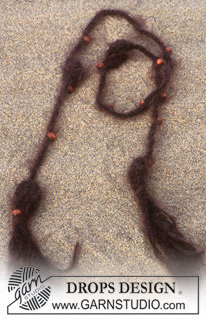




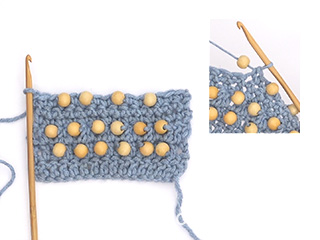







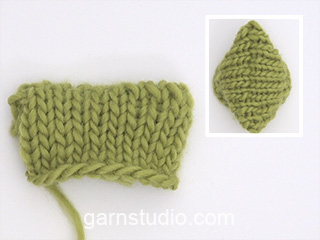






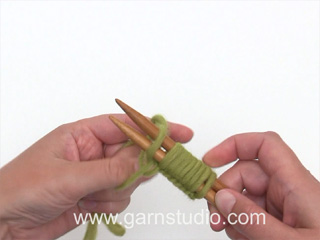










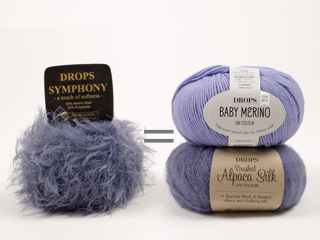
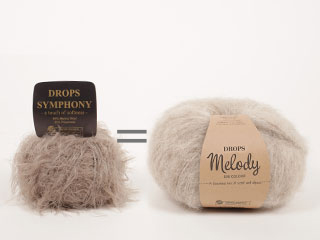

























Comments / Questions (25)
On écrit qu'à 52cm on augmente côté bande encolure 8 fois 1 m. et en même temps à 54 cm, côté bande encolure, on doit faire des diminutions. Est-ce que les diminutions sont faites dans les m au pt mousse de la bande encolure ou directement dans les m du motif situé à côté de celle-ci ? Dans les détails des diminutions pour l'encolure il est écrit de diminuer juste avant/après les m au pt mousse. Ce n'est pas clair pour moi ? Merci !
02.02.2020 - 01:19DROPS Design answered:
Bonjour Mme Lathier, les augmentations du col se font au point mousse, et on diminue pour l'encolure les mailles du point fantaisie avant/après les mailles point mousse = les mailles de bordure devant + les mailles augmentées pour le col - cf DIMINUTIONS (pour l'encolure). Bon tricot!
03.02.2020 - 09:59Hallo, klopt het dat aan het begin van het voorpand na de 4 nld ribbelsteek nog 2 nld trocotsteek gebreid moeten worden? Bij het rugpand is dat nl niet zo. Ik heb het idee dat het patroon daardoor niet mooi zal doorlopen aan de zijkanten. Ik hoor het graag.
29.07.2018 - 22:33DROPS Design answered:
Dag Chiqui, Op zowel het voor- als het achterpand, brei je 4 naalden (= 2 ribbels) ribbelsteek. Na deze 4 naalden op het voorpand brei je 2 naalden tricotsteek.
31.07.2018 - 11:39Hallo, Kan iemand mij helpen met het afkanten voor het armsgat? ik heb het wel 15 keer geprobeerd, maar ik kom niet uit met de steken. Ik brei over 75 steken. Ik kom nl niet uit met het patroon. Alvast bedankt.
23.07.2018 - 23:08DROPS Design answered:
Dag Chiqui, Je begint aan de ene kant met het afkanten van 3 steken, dan op de teruggaande naald kant je ook 3 steken af (= 1x3 steken aan beide kanten), vervolgens kant je aan beide kanten 2 steken af en dit doe je drie keer. Zo ga je verder met het afkanten aan beide kanten volgens beschrijving.
26.07.2018 - 11:14Ik ben begonnen met het rugpand en ik ben bij de minderingen voor de armsgaten. Het ajourmotief komt niet mooi uit als ik afkant voor de armsgaten. Het lijkt of het een beetje verspringt. Kunt u mij uitleggen hoe ik kan zorgen dat het ajourmotief mooi doorloopt. Ik moet eerst aan weerszijden 1x 3 st afkanten, daarna 1x 2st, 3 x 1st. Ik moet 3 steken afkanten, moet ik dan 1 kantst breien en eerst de 2 st r samenbreien en dan afkanten of moet ik 1 kantst en dan 3 steken recht afkanten?
18.07.2018 - 21:16Zit er 1 st r tussen de 2 omslagen?, want dan kom ik wel uit met de steken. Dank alvast.
01.07.2018 - 21:40DROPS Design answered:
Dag Chiqui, Ja, dat klopt; in M1 zit er 1 steek tussen de 2 omslagen.
05.07.2018 - 15:39Ik begrijp patroon M1 niet. Het telpatroon bestaat uit 17 st, is dit incl. De 2 kaatst.? Ik hou nl 13 steken over op de terugkerende naald.
01.07.2018 - 18:43DROPS Design answered:
Dag Chiqui, Telpatroon M.1 bestaat uit drie delen, namelijk M.1a, M.1b en M.1c. Je breit eerst M.1a dan herhaal je steeds M.1b en op het einde brei je M.1c Het telpatroon is exclusief kantsteken.
01.07.2018 - 19:40Bonjour Je ne comprends pas bien le motif M1B, il y à 2 jetés à la suite??? ou les jetés sont séparés par une maille endroit??? comme je les vois côte à côte sur le dessin... Merci de votre aide Miosotis
27.05.2015 - 18:35DROPS Design answered:
Bonjour Miosotis, dans M1, les diagrammes se décomposent ainsi: M1A= 2 m ens à l'end, 2 m end, 1 jeté, 1 m end M1B= 1 jeté, 2 m end, glisser 1 m à l'end, 2 m ens à l'end, passer la m glissée par-dessus la m tricotée, 2 m end, 1 jeté, 1 m end M1C: 1 jeté, 2 m end, glisser 1 m à l'end, 1 m end, passer la m glissée par-dessus la m tricotée. Ainsi, chaque diminution est compensée par 1 jeté = le nombre de mailles reste le même. Bon tricot!
28.05.2015 - 09:40Pattern says cast on 57 sts for XS. Do I cast on 59 for the edge sts? On first row of the pattern it says M.1a =5 sts, M.1b over next 56 sts and then M.1c =4 sts. That is more sts than I cast on. When switching from M.1a to M.1b to M.1c, there is a yarn over in between each section. When I repeat M.1b across, do I yarn over on both sides of the repeat or is the yarn over between a,b&c only done on a&c? Thank you, Linda Linda...:)
28.07.2014 - 04:33DROPS Design answered:
Dear Linda, I'm sorry there is a typo in the number of sts in size XS, you should cast on 67 sts - this will be corrected as soon as possible. Thank you. In M.1, the 2nd YO in M.1B is the first when you repeat the pattern, M.1C starts with 1 YO. Happy knitting!
28.07.2014 - 09:52Hallo, ich habe eine Frage: Kann es sein, dass man die Maschenaufnahme für den Kragen nicht jede 4. Reihe sondern jede 2. Reihe durchführen muss? Zumindestens bei mir kommt, das momentan so gar nicht hin. Bis ich alle Aufnahmen abgeschlossen habe bin ich schon im letzten M2 angelangt. Und auf dem Foto sieht es aus, als würde nach der Aufnahme nochmal M1 und dann erst M2 folgen. Viele Grüße!
27.11.2013 - 10:06DROPS Design answered:
Liebe Lena, ich habe mit dem norwegischen Original verglichen und es stimmt überein. Da es eine ältere Anbleitung ist, haben wir das Modell leider nicht mehr hier. Schreiben Sie uns bitte Ihre Erfahrungen.
27.11.2013 - 13:53Gentile drops, ho bisogno di un vostro aiuto per realizzare il colletto di questo giacchetto, ho comprato il vostro filato ho realizzato tutti i pezzi comprese le maniche, ma non riesco a capire come devo procedere dopo aver intrecciato le 20 maglie x la spalla. se lavoro su tutte le maglie 4 ferri a legaccio e poi solo sulle 11 esterne 2 ferri a legaccio come faccio a proseguire a maglia legaccio su tutte le maglie? non riesco a capire.Grazie Anna
12.04.2012 - 15:03DROPS Design answered:
Gentile Anna, credo di capire il problema. E' come lavorare i ferri accorciati (ved. video Ferri accorciati base sul ns sito). 4 f a leg. su tutte le 20 m, 2 f a leg. solo sulle 11 m più esterne, poi si continua su tutte le 20 m di nuovo. Si forma il colletto in questo modo. Mi faccia sapere se ha capito. italy@garnstudio.com
13.04.2012 - 13:26